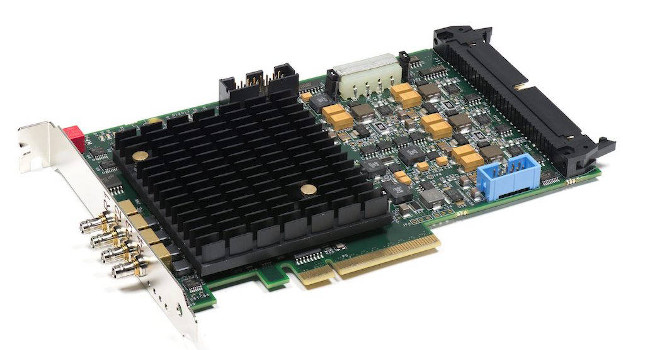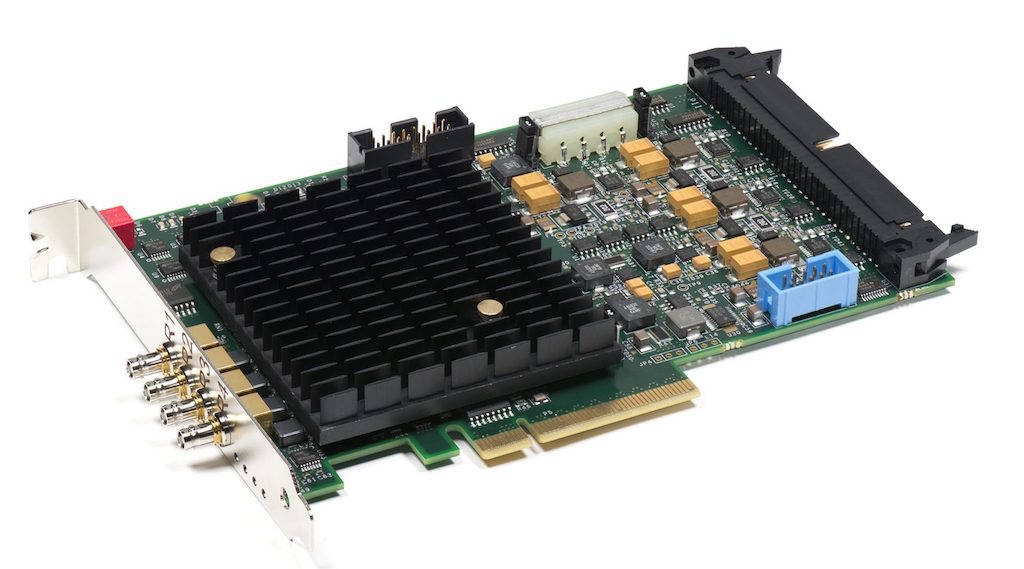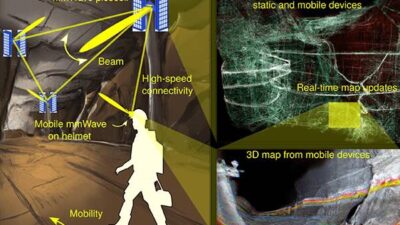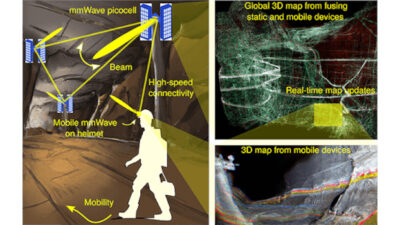CoaXPress 2.0 (CXP 2.0) and 10GigE Vision (10 GigE) are the two most popular interfaces for machine vision and discrete sensors; CXP 2.0 has advantages in flexibility, speed, bandwidth and cable length.

As complementary metal oxide semiconductor (CMOS) sensors become larger and continue to increase in speed and resolution, two bandwidth interfaces have emerged with the capacity to fully maximize their performance for machine vision: CoaXPress 2.0 (CXP 2.0) and 10GigE Vision (10 GigE). The CXP standard is managed by the Japanese Industrial Imaging Association (JIIA), which is part of G3, the global initiative on vision standardization. 10 GigE is managed by the IEEE 802.3 working group, which is part of the IEEE 802 LAN/MAN Standards Committee.
Both CXP 2.0 and 10GigE promise high-speed, reliable results in demanding vision applications. Yet when compared head-to-head in the real world of machine vision, CXP 2.0 has become the dominator player. 10GigE will be important, but secondary, in the future.
Information about CXP 2.0 for machine vision
CXP was first demonstrated at Vision 2008 in Stuttgart, Germany. The original version, CXP 1.0, created an immediate sensation by supporting 6.25 Gb/s maximum data rate, or about six times faster than GigE Vision (1GigE) and 40% faster than USB3 Vision (USB3). In 2019, CXP 2.0 was launched with two additional tiers: CXP-10 (10 Gbps) and CXP-12 (12.5 Gbps), making it possible to reach a staggering 50 Gb/s on four lanes. CXP 2.0 makes it possible for a 10-bit 12-megapixel area-scan sensor to capture full-resolution images at more than 300 frames-per-second, or for an 8-bit 16k line-scan sensor at 300,000 lines per second. One CXP-12 connection can carry data rates equivalent to two CXP-6 connections, therefore decreasing the cable count from two to one, and requiring fewer repeaters or split boxes.
Although it exceeds virtually any imaging requirement at this moment, data rates of 100 Gb/s can potentially be realized with an 8-channel frame grabber or two 4-channel frame grabbers, a capacity that may be required in the near future, for example, in deep learning or for very complex triggering.
Once introduced, system builders found linking one CXP frame grabber with multiple CXP cameras permitted highly precise synchronization with little to no latency. Synchronization is performed through the frame grabber and does not require an additional trigger signal as is the case with USB3 and GigE. Like the original CXP 1.0 version, CXP 2.0 uses standardized 75-ohm Coaxial cable to carry video, camera control and triggering, as well as power.
Information about 10GigE interface for machine vision
The 10GigE interface, meanwhile, came from the world of networking in 2010. It provides many of the same benefits of 1GigE, but the 10GigE interface sports a 10-fold boost over 1GigE with usable bandwidth of 9.6 Gbps. Its maximum transmission bandwidth is restricted by the slowest component in the network, whether it is a router, switch, cable, adapter or camera. When properly networked, 10GigE’s speed allows it to reduce latency to 5-50 µs.
Proponents of 10GigE Vision stress its simplicity and the cost effectiveness of using standard Ethernet cables and GigE Vision-compliant devices to achieve better scalability and flexibility. 10GBASE-T is already widely adopted in the IT industry, with several 10GBASE-T standard compliant products that can be leveraged in designing an imaging system. Another advantage frequently cited is a maximum cable length of 100 meters with Cat7 or 55 meters with Cat6.
Supporters of 10GigE imagine a world where applications that once involved several host PCs, frame grabbers, repeaters, and data and power cables, would be exchanged for 10GigE Ethernet. Every camera connects to one switch, using one host PC, with low-cost Ethernet cables providing data and power. Maintenance is reduced by updating the firmware on all the cameras from just one location or configuring multiple cameras through one PC.
More gigs, more problems: CPU limits, work-arounds
Despite 10GigE’s potential advantages, it hasn’t grown because of the host PCs 10GigE relies on. CPUs haven’t kept pace so they often can’t handle the bandwidth by themselves, which makes sense. If 10GigE sends ten times more data from a camera than 1GigE, it costs the host PC ten times the processing power. As a result, it takes longer for the computer to calculate and reconstruct an image. Because this data de-encapsulation is performed in the CPU, 15 to 20% of the CPU’s capacity may be consumed in the unpacking of packets instead of on the application.
It is common for hardware caches or the buffers on a switch or network cards to become briefly overfilled due to the surge in incoming packets, a predicament that leads to corrupted images, data packets getting dropped, frames being lost, plus increased latency and jitter. A packet re-transmit option is available with 10GigE but it is not completely viable owing to extended turnaround time compared to the bandwidth.
System builders have addressed CPU limitations with 10GigE network interface cards (NICs) to manage CPU usage, and with 10GigE frame grabbers to offload or pre-process data. The problem is they eliminate 10GigE Vision’s promise of economic benefits or simplicity. While NICs can reduce CPU stabilization somewhat they are now essentially the frame grabber for this interface that purports to not need frame grabbers.
CXP frame grabbers often have onboard processing
CXP frame grabbers often have additional features such as onboard processing, or input/output (I/O) interfaces which enhance their capabilities. Another advantage of the CXP frame grabbers is the ability to use GPUDirect or DirectGMA where the data goes from the grabber to the GPU for processing complex algorithms. This feature is limited or unavailable on almost every NIC. Additional to this is the NIC frame grabber can only reach speeds that max out at 9.6 Gbps, but they offer far less at times on a busy network. While NICs fit into PCIe slots, not all motherboards can deliver full bandwidth to PCIe slots. PCIe slots may share bandwidth with other peripherals such as USB ports or other PCIe slots, slowing down processing.

Reliability of 10GigE vision networks: IEEE 1588
Reliability may be compromised by the 10GigE interface being non-deterministic. Instead, 10GigE relies on the IEEE 1588 Precision Timing Protocol (PTP) for synchronized timing with multiple devices and cameras, yet PTP requires attention to detail and is not natively integrated.
Hacking PTP has also been demonstrated to be easy to execute, which is a problem with cyber attacks increasing against manufacturers. Furthermore, 10GigE reliability only can be achieved by an integrator, or other person with expert knowledge, precisely configuring the memory bandwidth, CPU, PCIe and NIC card to their optimal settings. In industrial settings subject to the demands of 24/7 production runs, precision can be a hard standard to maintain without a dedicated information technology (IT) staff.
Cabling and power for high-speed machine vision
The ability to run 100 m of Ethernet cable (Cat6A, Cat7) isn’t necessary an advantage for 10GigE, since the vast majority of vision applications operate at lengths far shorter than CXP 2.0’s maximum 40 m. In the event a distance longer than 40 m is needed, a CXP extender over fiber can be used without any detrimental effects. It’s worth noting coaxial cable prices are now in line with Ethernet cables (Cat6 or Cat7). Coaxial cables also are easier to handle and assemble in the field. Running 10GigE over UTP introduces issues, such as crosstalk and signal noise, where electrical signals on one wire pair with others, and have been hard to overcome.
Since its introduction CXP has proven popular for retrofit applications where obsolete analog cameras running on coaxial cabling have been swapped out for CXP cameras and frame grabbers in aerospace and traffic monitoring. In these installations, the existing cabling infrastructure fully supports CXP. Also, CXP requires only one cable for data, commands and power. In theory, 10GigE cameras can do the same. However, most integrators have simply opted for a two-cable approach, with the second connection used for power and I/O.
Power consumption for 10GigE is twice that of other interfaces, demanding up to seven W for operation, which doesn’t include the cameras’ power requirements. This leads to excessive heat being generated. As sensors are temperature sensitive, ensuing noise can produce significant degradation of image quality. The higher the temperature, the more noise created.
High-speed, high-resolution machine vision applications
CoaXPress is more widely adopted than 10GigE Vision in demanding high-speed, high-resolution applications. Besides new systems, older analog camera systems that use coaxial cables are being retrofit with CoaXPress cameras and frame grabbers without the added cost of re-cabling. Camera Link systems also can be easily upgraded to CXP 2.0 since it has a similar frame grabber-based infrastructure, while providing more speed, higher bandwidth, flexibility and longer cable lengths.
CoaXPress 2.0 also opens up the possibility of new applications based on today’s most powerful CMOS sensors. While 10GigE is used in the IT world and despite the success of 1GigE, the 10GigE standard is still evolving to industrial machine vision’s demands. Until that time, the CXP 2.0 will remain the better choice with 5BaseT having greater probability of being the next big GigE interface as it works with the more than 70 million miles of Cat5e cable estimated to be installed globally, and consuming half the power of 10BaseT.
Donal Waide, director of sales for BitFlow Inc. Edited by Chris Vavra, web content manager, Control Engineering, CFE Media and Technology, [email protected].
Keywords: cmos, CoaXPress, 10GigE
CoaXPress 2.0 and 10GigE are the two most popular interfaces for machine vision applications.
10GigE has more potential long-term, but is hampered by its ties to core PCs, which is something CXP 2.0 doesn’t have to contend with.
CXP 2.0 also has the potential of being applied to future machine vision applications more easily than 10GigE.
CONSIDER THIS
What do you use for your machine vision applications and why?



